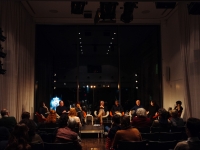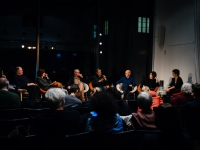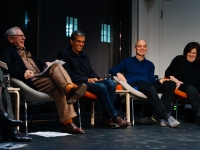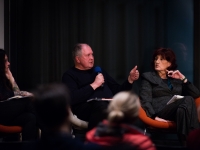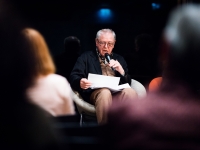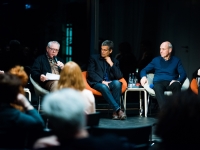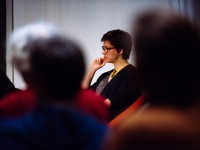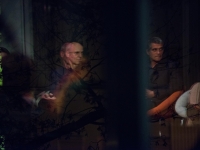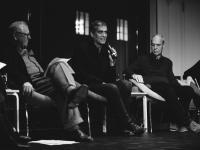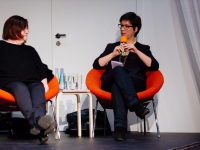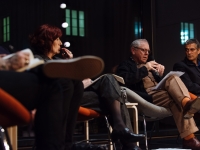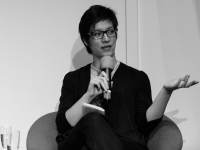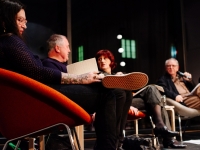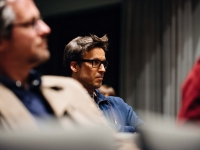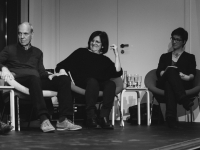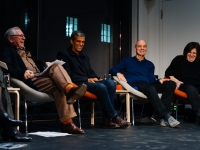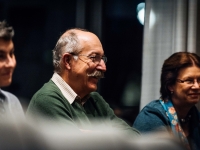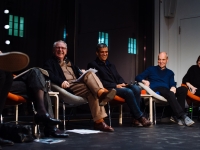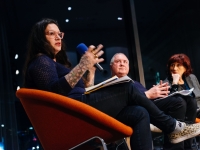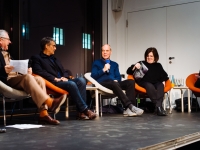SYMPOSIUM
Fragments of Empires
8 November 2014: 17:00 – 19:00
Accompanied by MOMENTUM_InsideOut screening
@ .CHB Collegium Hungaricum Berlin
Dorotheenstraße 12, 10117 Berlin

 |
With:
Lutz Becker, David Elliott, Theo Eshetu, Mark Gisbourne,
Gülsün Karamustafa, Fiona Pardington, Bojana Pejic, Sophia Pompéry
The Symposium and the screening are a part of
Fragments of Empires exhibition opening weekend
@ .CHB Collegium Hungaricum Berlin
More info here >
Speakers:
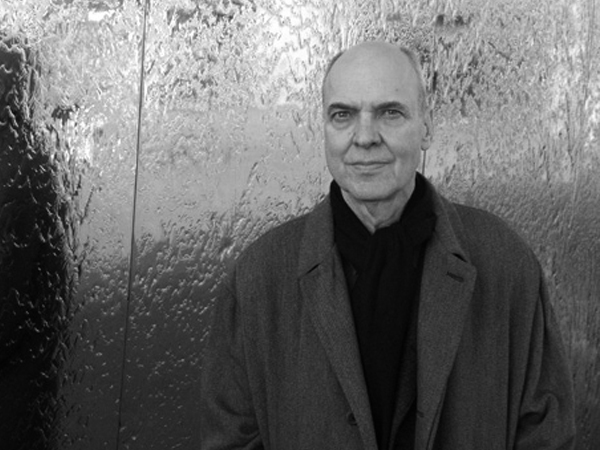
Lutz Becker
Lutz Becker was born in 1941 in Berlin, Germany and now lives and works in London, UK. Lutz Becker is an artist, filmmaker, curator and film-historian. He studied at the Slade School of Fine Art, London, where he graduated under Thorold Dickinson and became a distinguished director of political and art documentaries. A practicing painter, he is also a curator of exhibitions. He collaborated with the Hayward Gallery on The Romantic Spirit in German Art (1994), Art and Power (1995), and Tate Modern on Century City (2001).
For Fragments of Empires, Becker re-visits a sound installation commissioned for the exhibition After the Wall held at the Moderna Museet Stockholm in 1999 and subsequently in Berlin in 2000 at the Hamburger Bahnof, also curated by David Elliott. Its five constituent sound montages are based on original recordings made at the fall of the Berlin Wall. MOMENTUM presents the sound sculpture After The Wall in the context of the 25th anniversary of the fall of the Berlin Wall. The fall of the Wall 25 years ago, in November 1989, symbolised the end of the separation of the City of Berlin, as well as that of Germany into an Eastern and a Western state. It marked, for everybody to see, the final collapse of the idealogical empire of Communism.
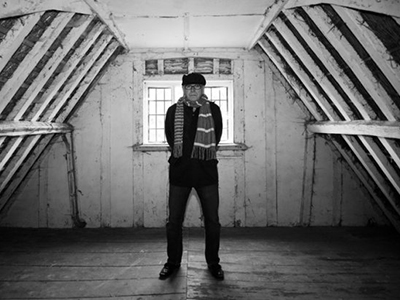
DAVID ELLIOTT
David Elliott is an English born curator and writer. From 1976 to 1996 he was Director of the Museum of Modern Art in Oxford, England, Director of Moderna Museet [The National Museum of Modern and Contemporary Art] in Stockholm, Sweden (1996-2001), founding Director of the Mori Art Museum in Tokyo (2001-2006), the first Director of the Istanbul Museum of Modern Art [Istanbul Modern] (2007), Artistic Director of the 17th Biennale of Sydney (2008 – 2010) and Artistic Director of the 1st Kiev International Biennale of Contemporary Art (2011-12), Artistic Director of the 4th International Biennale of Work by Young Artists in Moscow (2014-2014), Rudolf Arnheim Guest Professor in Art History at the Humboldt University, Berlin (2008) and Visiting Professor in Museum Studies at the Chinese University in Hong Kong (2008/11/13). From 1998 until 2004 he was President of CIMAM (the International Committee of ICOM for Museums of Modern Art). He is Hon President of the Board of Triangle Art Network/Gasworks in London and on the Asia Advisory Board of the Guggenheim Museum in New York.

Theo Eshetu
Theo Eshetu was born in London 1958, and grew up in Addis Ababa, Dakar, Belgrade and Rome. He now lives and works in Berlin. Forging a hybrid language to merge practices of video art and documentary filmmaking, Eshetu explores perception, identity, and notions of the sacred through electronic time-based media and optical devices and effects. He draws from anthropology, art history, scientific research, and religion—Catholic, African, Muslim, Buddhist—to explore clashes and harmonies of human subjectivity between world cultures in the global context. Though essentially conceptual, Eshetu’s work is often focused on cultural displacement, and is always grounded in compelling aesthetic components, often achieved through fractal repetition, such as kaleidoscopic mirroring, multi-screen projections, or mosaic-like patterning of images.
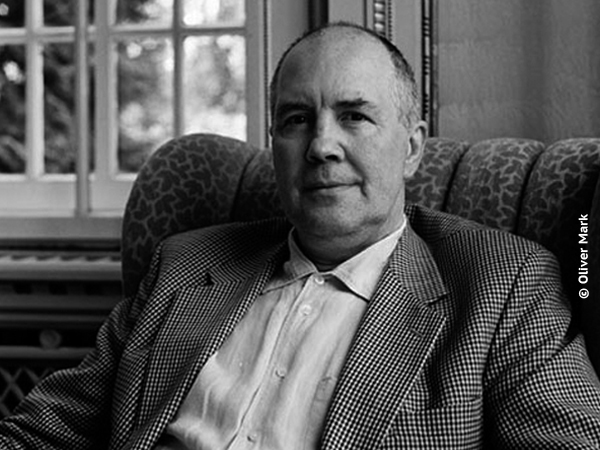
Photo Credit: Oliver Mark
Mark Gisbourne
Mark Gisbourne: Stratford-on-Avon, in England (1948). Educated in Rome, and Courtauld Institute of Art, University of London, where he was a tutor. Lecturer Master’s Programme, Slade School of Art, University College, University of London, and Senior Lecturer Sotheby’s Institute, Masters Programme(s) (accreditation University of Manchester), where he supervised numerous contemporary art dissertations, many of his students have become directors and curators of museums and galleries across the world. He is a former Treasurer and twice President of the British Art Critics Association (AICA), an International Vice-President AICA, and he co-organised the World Congress of Art Critics, Tate Modern following the museum’s opening in 2000. Recent Visiting Professorships include the University of Sassari, and the Alvar Aalto University, Helsinki.
His concentration today is an international curator of exhibitions across Europe, and as a writer of more than a dozen books and nearly three hundred catalogue publications, these having been published variously in over twenty languages. For the last ten years he has curated the international exhibition Rohkunstbau in Brandenburg (the last being Rohkunstbau XX ‘Revolution’, July-September, 2014) that included many international artists and produced extensive catalogues. He is currently involved in a series of exhibition projects with German artists in both Zagreb and Berlin. As a contemporary critic he has written numerous articles and reviews over the last thirty years. His latest book publications in English, English/German, English/Spanish, English/Russian published in 2013-14, include among others a Collector’s book ERZGEBURTSTAG “ERZKUNST” (Kerber Verlag, Berlin, 2013), a new three hundred page publication Berlin Art Scene (Becker Joest Volk Verlag, February, 2014), and several monographic publications on Titus Schade (Distanz Verlag, 2013) Paule Hammer (Kerber Verlag, Berlin, 2013), Markus Keibel (Berlin, Distanz Verlag, 2013), Adrian Ghenie (Berlin, London and New York, Hatje Cantz Verlag, 2014), Bosco Sodi (2014, Mexico City and New York), Anne Wolff ‘Persona’ Glass Sculpture (Arnoldsche Art Publishers, Stuttgart, October, 2014) and Philipp Fürhofer ‘Diaspheres’ (Hatje Cantz, May, 2014), and most recently monographic essays in Via Lewandowsky, Christoph Steinmeyer, Rayk Goetz (Kerber Verlag, October 2014) and Kames Lee Byars (curator and catalogue, Nicolai Verlag, Berlin). His recent international touring exhibition with an extensive catalogue was I Am A Berliner: Eighteen Positions in Berlin Painting (Zagreb, Kunsthalle of the Artist Association, 2012; Helena Rubenstein Pavilion, Tel Aviv Museum; Sassari Modern and Contemporary Museum, Sardinia, 2013). He currently lives and works in Berlin.
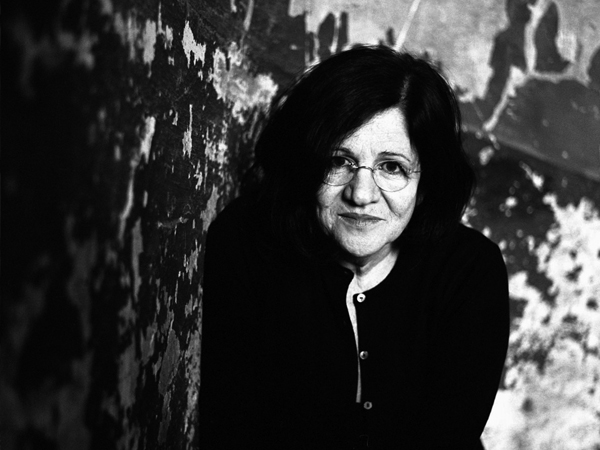
Gülsün Karamustafa was born in 1946 in Ankara, Turkey. She lives and works in Istanbul, where she is recognized as one of the most important and pioneering Turkish contemporary artists. Her work addresses questions of migration, displacement and military dictatorship (during the 1970s she was imprisoned by the Turkish military). She was refused a passport for sixteen years until the mid-80s and, unlike other Turkish artists, could not emigrate or travel. This enforced isolation led her to an analysis of her own situation and context: the city of Istanbul, interior migration and nomadism within Turkey, and the ideological and psychological ramifications of identity. Like a sociologist or anthropologist, Gülsün Karamustafa explores the historical and social connections of oriental cultures in her works, often using materials that express the hybrid character of different cultures and religions. Ostensibly reverting to historical lore, Karamustafa’s artistic comments oscillate actually between sensual meta-narratives and ironic-critical stories about the present situation, addressing themes of identity and migration, cultural difference and acculturation within the contexts of orientalism and post-colonialism. Since the end of the late 1990s, she has often used already existing materials and images of oriental or occidental origin that she fragments, dismantles and reassembles in order to contrast ‘private’ with ‘public’ by referring to every-day life, culture, art history, and the media.
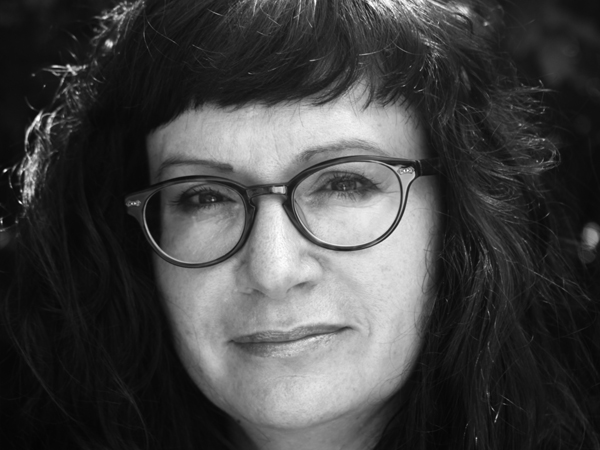
Fiona Pardington was born in 1961 in Devonport, New Zealand, of āi Tahu, Kati Mamoe and Scottish descent. She lives and works in New Zealand. She is recognized as the leading woman artist working with photography in New Zealand. Her work examines the history of photography and representations of the body, taking in investigations of subject-photographer relations, medicine, memory, collecting practices and still life. Fiona has been working in a still-life format within museums, recording taonga (Māori ancestral treasures) and other historic objects such as hei tiki (greenstone pendants) and the now extinct huia bird. In these works, she brings to a contemporary audience an awareness of traditional and forgotten objects. Re-examining the history of portraiture in more recent work, she addresses the New Zealander traditional idea of the photograph as a stand-in for an actual person – a way of looking at portraits that western minds associate with traditions of Maori animism that imbue photographs of loved ones who have passed away with their actual presence and characteristics. Applying this tradition to a still-life format, Pardington portrays ancestral Maori carvings alongside objects redolent of the colonial history of an island nation at the outer edges of empire.
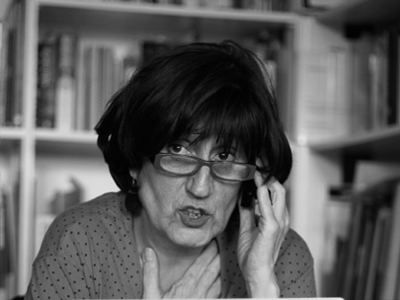
Bojana Pejic
Bojana Pejić has organized many exhibitions of Yugoslav and international art. In 1995 she organized an international symposium, The Body in Communism, at the Literaturhaus in Berlin. She was chief curator of the exhibition After the Wall–Art and Culture in Post-Communist Europe, organized by the Moderna Museet, Stockholm (1999), which was also shown at the Museum of Contemporary Art Foundation Ludwig in Budapest (2000) and at Hamburger Bahnhof in Berlin (2000-2001). Pejić recently curated Gender Check–Femininity and Masculinity in the Art of Eastern Europe at MUMOK (Museum Moderner Kunst Stiftung Ludwig, Vienna). Pejić lives and works in Berlin.
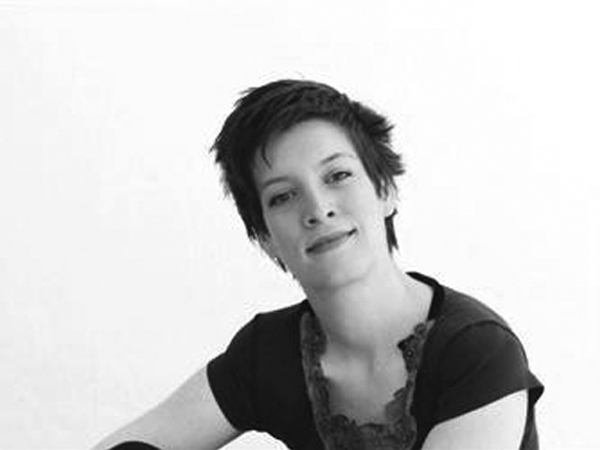
Sophia Pompéry is a Hungarian artist (born 1984 in Berlin) whose family roots extend both through the Ottoman and the Austro-Hungarian Empires from brothers separated by the politcal re-drawing of national borders. Pompéry studied from 2002 to 2009 at the Kunsthochschule Berlin Weissensee. In 2009 and 2010, she participated in the Institute for spatial experiments by Olafur Eliasson at the Universität der Künste, Berlin. In 2011 she was awarded with the Toni and Albrecht Kumm Prize for the promotion of fine arts and in 2012, became a fellow of the DAAD art program with a six-month stay in Istanbul. She lives and works in Berlin and Istanbul.
FRAGMENTS OF EMPIRES SYMPOSIUM
(photos by Camille Blake)


 Back to Homepage
Back to Homepage
